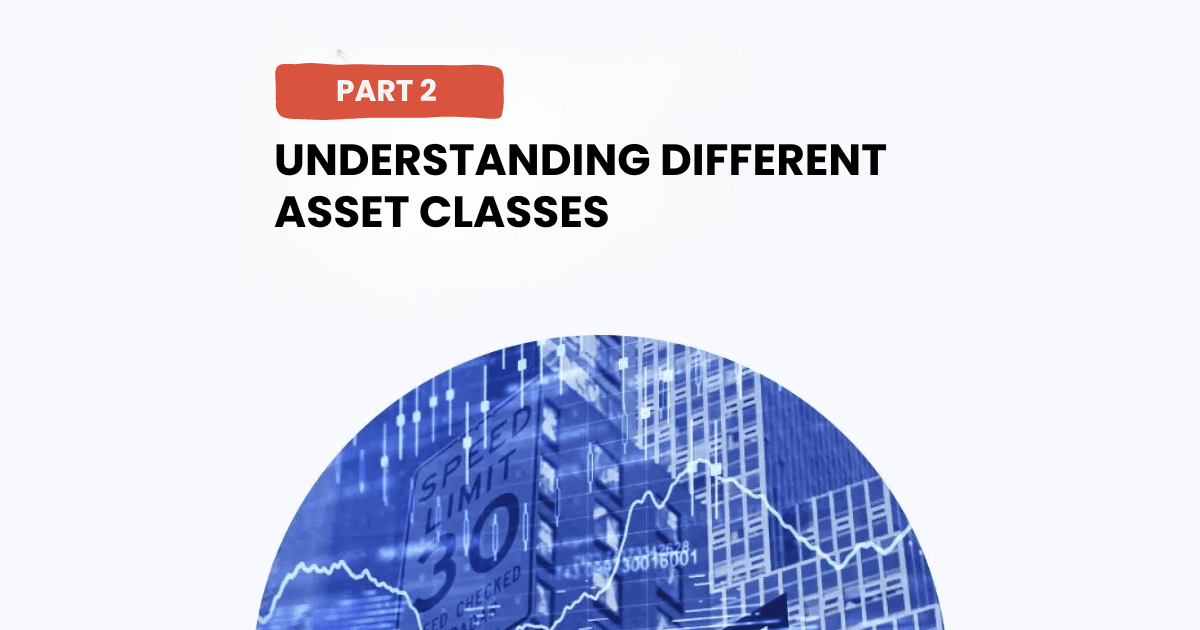
When it comes to trading or investing, understanding the variety of asset classes available is crucial. These assets are the building blocks of any portfolio, whether you’re trading them through CFDs (Contracts for Difference) or choosing to invest in them directly.
In this part of our beginner's guide, we'll dive into the major asset classes you can trade with most major brokers—forex, stocks, indices, commodities, ETFs, and cryptocurrencies—and how each offers unique opportunities and risks.
The forex market is the largest and most liquid financial market in the world, with trillions of dollars traded daily. Forex trading involves the exchange of currency pairs, such as EUR/USD or GBP/JPY, speculating on the strength of one currency against another.
With CFDs, you don’t physically own the currency, but instead, you are betting on its price movement. This flexibility allows traders to profit from both rising and falling markets, often with leverage, which can amplify both gains and losses.
Forex offers 24-hour market access, meaning you can trade around the clock. It's highly liquid, with fast execution times, and is perfect for traders looking to capitalize on global news and events.
When you think of stocks, you’re probably thinking of buying shares in companies like Apple or Tesla. When investing directly, you own a piece of the company and benefit from price appreciation and dividends.
However, with CFDs on stocks, you can speculate on price movements without physically owning the stock itself. This allows for the flexibility to go long (buy) or short (sell) based on market trends.
Trading stock CFDs allows you to gain exposure to top global companies with less capital, thanks to leverage. You can diversify your trades across multiple sectors and markets, and take advantage of short-term opportunities without needing to hold actual shares.
Indices represent a basket of top-performing companies within a specific country or sector. For example, the S&P 500 includes the 500 largest companies listed in the U.S., while the FTSE 100 includes the top companies listed on the London Stock Exchange.
Rather than trading individual stocks, you trade the entire index through CFDs, which provides exposure to broader market movements and trends.
With indices, you’re essentially able to access entire stock markets in a single trade. These instruments offer instant diversification because you’re betting on the overall performance of multiple companies, not just one.
With CFDs, you can speculate on entire economies or industries, profiting from market trends without needing to manage multiple individual positions. That’s why many call indices a good asset class for diversification.
Commodities like gold, oil, and agricultural products have been traded for centuries and remain important for diversifying portfolios. And for traders in the UAE and the wider gulf region, they are widely popular instruments to trade.
Whether you’re investing in physical gold or trading commodities via CFDs, these assets act as a hedge against inflation and economic uncertainty. Commodities tend to have a close relationship with geopolitical events and global supply-demand cycles.
Why trade commodity CFDs? Well, they allow you to speculate on price movements without needing to physically hold the asset. For instance, you can profit from rising oil prices or falling gold prices just by predicting market trends. Assets like gold and oil are also known to be inflation hedges and portfolio diversifiers.
ETFs are baskets of assets, including stocks, commodities, or bonds, that trade on an exchange like a stock. Investors often use ETFs to gain broad exposure to a market, sector, or theme.
You can invest in ETFs directly by purchasing shares, or trade them via CFDs to speculate on the ETF’s price movements without owning the underlying assets.
Like indices, ETFs offer diversified exposure to multiple assets within a single instrument. With CFDs, you can leverage this diversification to profit from short-term market moves, without the need to buy shares in every underlying asset.
Cryptocurrencies like Bitcoin, Ethereum, and Ripple have surged in popularity due to their volatility and potential for high returns, especially for traders and investors in the GCC. When investing directly, you physically own the digital currency, stored in a digital wallet.
However, trading crypto CFDs allows you to profit from price movements without the complexities of owning and storing cryptocurrencies.
Trading crypto CFDs enables you to benefit from market volatility without the need for secure wallets or exchanges. With CFDs, you can also trade cryptocurrencies using leverage, magnifying your potential returns, though it also increases your risk.
When you invest directly in assets like stocks, ETFs, or cryptocurrencies, you own the underlying asset, and your profit depends on price appreciation or dividends. With CFDs, you don’t own the asset but instead speculate on its price movements.
This offers flexibility, such as the ability to go short and profit from falling markets, along with leverage to maximize potential gains (and losses).
Whether you're looking to diversify into commodities, speculate on crypto, or explore Forex, understanding different asset classes is key to crafting a balanced trading or investing strategy.
As you continue learning, you’ll discover how each asset class interacts with global markets and economic trends, helping you navigate opportunities and manage risk effectively.
Sign up to get the inside scoop on today’s biggest stories in markets, finance, and business.
By clicking “Sign Up”, you accept our Terms of Service and Privacy Policy. You can opt-out at any time by visiting our Preferences page or by clicking "unsubscribe" at the bottom of the email.
Leave a Reply